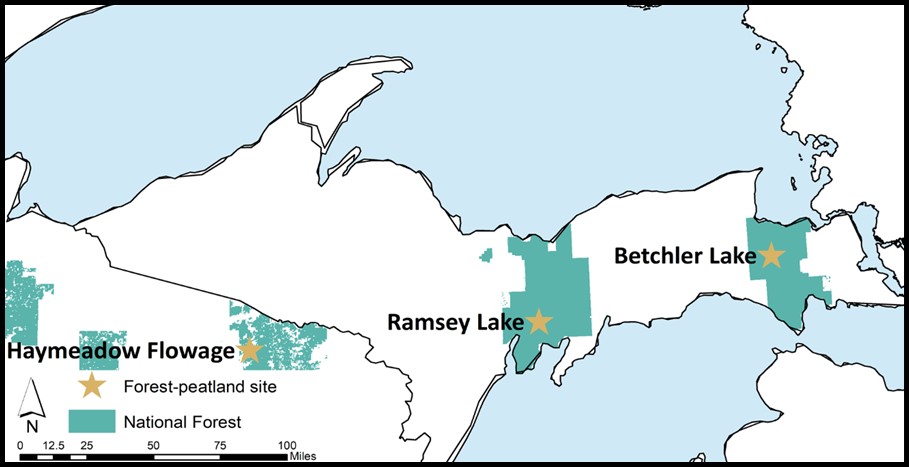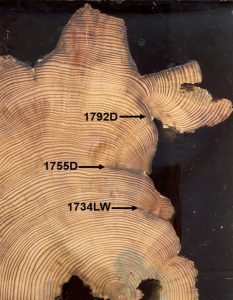Posted 01/8/21
Fires in peatlands of the Great Lakes Region are often assumed to be infrequent catastrophic events, but our investigation of historical fires in three peatlands across the Great Lakes Region found that between 1548 and 1955 fires burned every 7 to 34 years. Fire was an integral ecological process in these peatlands historically and recent lack of fire could have unintended consequences for these unique ecosystems.
Peatland fires can be some of the most catastrophic and expensive fires globally, including in the Great Lakes Region where wildfires in the mid-2000s burned through tens of thousands of acres in Michigan peatlands, and in 1976, when the Seney Fire burned for months underground consuming peat. Deep burning peatland fires can lead to the conversion and the permanent loss of peatlands, which are important refugias for plant and animal species. Such fires, however, have been infrequent since European settlement, and are assumed to have occurred only every few centuries or millennia. We investigated fire in peatlands to determine if historically fire in peatlands was indeed infrequent and severe.

Between 2017 and 2019, we collected samples from 220 fire-scarred trees in three peatlands within the Hiawatha and Chequamegon-Nicolet National Forests in the Great Lakes Region. Our sites were poor fen peatlands intermixed with dry to dry-mesic northern forests. We identified 141 fire years from 1548 to 1955. Prior to 1955 fires were historically frequent across our peatland sites occurring on average every 7 to 34 years depending on the site sampled. By using fire-scarred tree samples to investigate historical fire, we could identify fires that were likely low- to moderate-severity because fire scars are indicative of more frequent, low-severity fire whereas high-severity fires would have consumed most trees rather than just scarring them. We did not detect any fires after 1955, corresponding to the period when fire suppression efforts of the United States Forest Service became increasingly effective.

Historically, fire was frequent in the peatlands we investigated and our research warrants rethinking of the role of fire in these ecosystems. Such a rethinking could have major implications on how managers use prescribed fire and mitigate wildfire risk in peatlands. Fire suppression since the mid-1900s in Great Lakes’ peatlands likely has unintended consequences including the encroachment of undesirable vegetation into open bogs and fens that were historically maintained by frequent fires over hundreds of years. Furthermore, it is possible that by removing frequent fire from peatlands in the Great Lakes Region these systems could become more prone to more severe, catastrophic fires that burn deep consuming peat soils. A possible mechanism for such a shift may be encroaching vegetation drawing more water from peat soils making them more susceptible to burning under severe drought conditions. Repeated prescribed burning under the more moderate conditions (e.g., surface vegetation of the peatlands is dry, but the peat soils are inundated with water) could be one approach to prevent encroachment and maintaining low-severity fire regimes. Fire management in peatlands of the Great Lakes Region needs to include rethinking the role of fire, considering it not just as a threat but also as a potential tool.
Collaborators: Jed Meunier (Wisconsin DNR) and Eric Rebitzke (US Forest Service)
Story by Sutheimer, Colleen
